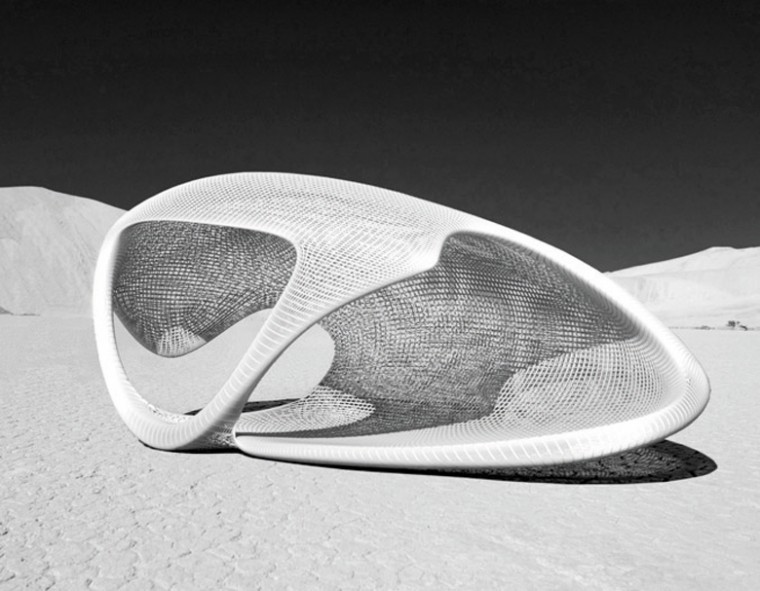Reimagining the sukkah
Published August 24, 2011
Mark your calendars to visit Washington University between October 18 and 22 when a city of sukkahs take over the campus. You can even vote for your favorite.
Better yet, you might want to build one yourself and take part in “Sukkah City STL,” a St. Louis-based competition for designing contemporary sukkahs following traditional Jewish guidelines – and there are close to 30 of them. The project is a joint undertaking among the Sam Fox School of Design & Visual Arts at Wash U, St. Louis Hillel and the Museum of ImaJewnation, with support from the Jewish Community Center.
ADVERTISEMENT
Built in conjunction with the fall holiday of Sukkot, the sukkah’s religious function is to commemorate the temporary structures that the Israelites dwelled in for 40 years during their exodus from Egypt. But there is more to this competition than just building a sukkah.
“There is a conceptual component as well. We want to start a conversation and invite people to participate,” explained Rabbi Andrew Kastner of St. Louis Hillel. “The conversation will be about the way space impacts us; particularly identifying and exploring the boundaries that define what it means to be human.
“As a rabbi what interests me about Jewish ideas and ideals is to see them in the broader marketplace. We want to challenge our community to celebrate a deeply religious experience and to identify the universal characteristics that can be shared with a broader community.”
Specific guidelines for building the sukkah, including size and material, as well as the conceptual specifications, are detailed at samfoxschool.wustl.edu/sukkahcitystl. Both Kastner and Brian Newman, a local architect and Wash U instructor who is helping to organize the competition, stress that this is not a Jewish competition but “an architectural, intellectual” project.
ADVERTISEMENT
Subtitled “Defining and Defying Boundaries,” Sukkah City STL asks participants to focus on the role of boundaries – whether material, cultural or metaphorical – in defining our lives and the ways we relate to an increasingly global society.
“The sukkah is a kind of physical manifestation of boundaries,” Kastner added. “It both embodies the promise of refuge and embraces the vulnerability of exposure to the elements. For participants, the challenge will be not only to build a sukkah that meets the traditional criteria, but also to examine and express a boundary issue that exists today within our collective lives.”
Currently, submissions are being accepted until Sept. 14. These submissions should be formatted as 11″ x 17″ PDF files and there is no limit to how many sheets an entrant may submit. Proposals may be made by individuals or in teams.
A panel of jurors, which includes architects, designers, architecture critics and rabbis, will select the 10 top finalists, who will then construct and install their sukkahs around the Women’s Building on the Danforth Campus Oct. 17, with the public viewing Oct. 18-22. Those dates overlap with Sukkot, which runs from sundown Oct. 12 to Oct. 19, as well as with parents weekend at the university Oct. 21-23.
Each finalist will receive a small honorarium to help defray building costs. One sukkah will be chosen by the community to carry the title of the People’s Choice Award.
Kastner said the competition sponsors reached out to more than 150 universities across the country as well as 100 architecture firms in the region and more cutting edge ones elsewhere. If a winning design is chosen but the individual or team cannot make it to St. Louis because of time constraints or expenses, they can elect to have Wash U architectural students serve as their proxy.
In addition, both he and Newman hope the competition will have wide appeal. Although plans are to adhere to the traditional laws of making a sukkah, “there is a whole lot of room for interpretation and maneuvering, which can give you something very contemporary or even unexpected,” said Newman.
Last year, a similar competition in New York garnered more than 600 entries from 43 countries. A jury chose 12 finalists, whose structures were displayed in Union Square Park.
Museum of ImaJEWnation exhibit
In conjunction with Sukkah City STL, the Museum of ImaJEWnation is asking artists to submit their work for the “Sukkah City STL Annex,” which will be on display at Congregation Shaare Emeth from Oct. 7-21.
Participants are being asked to design one wall of a sukkah in any medium and in any size up to, but not exceeding, 6-feet by 4-feet. A jury will select a number of entries to be on display at the synagogue, located at 11645 Ladue Road.
“We geared this project towards artists so that they can participate in this conversation about boundaries,” said Naomi Fishman, curator of the museum, which has no permanent address, but rotates exhibits to different venues.
“The aim of this project is to address a quickly changing and disorienting world, evidenced in the building, tearing down and blurring of the boundaries that structure our lives,” added Fishman.
Submissions will be accepted until Oct. 1. For details, go to www.imajewnation.org.
In addition to the exhibit at Shaare Emeth, a smaller version will be on display at Art St. Louis, 555 Washington Avenue, from Jan. 16-23, 2012.















